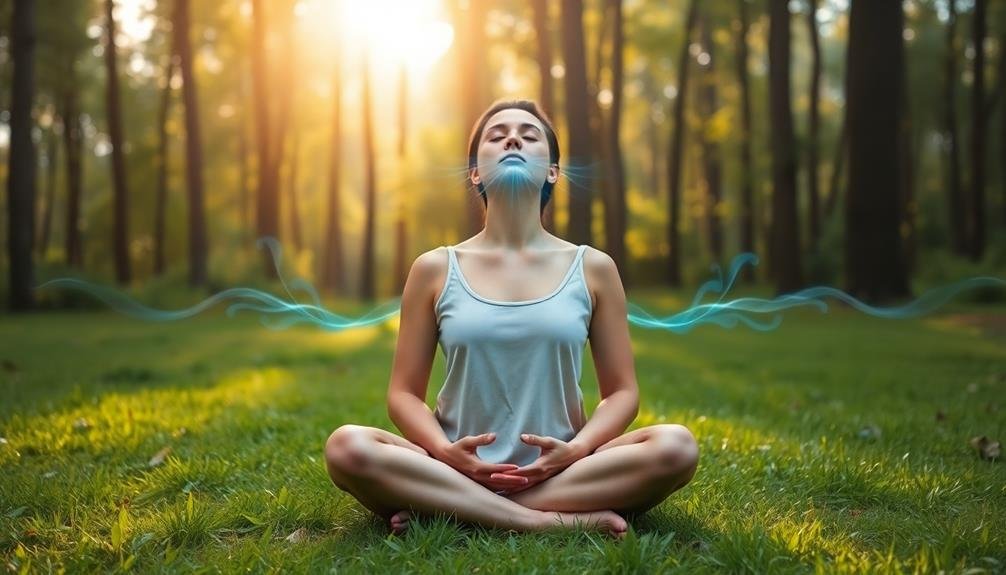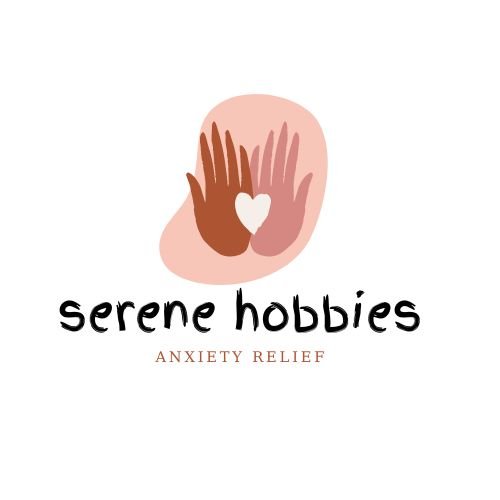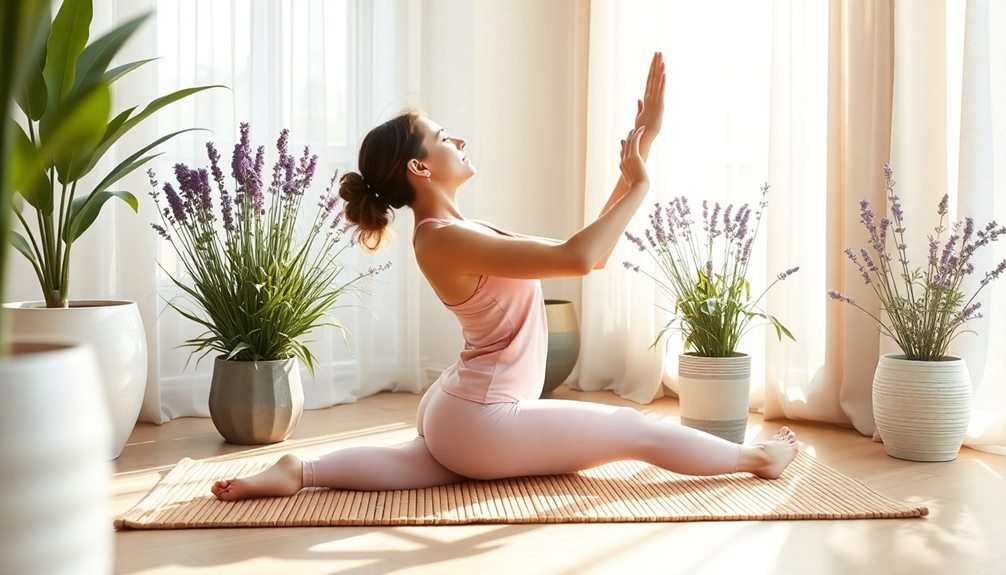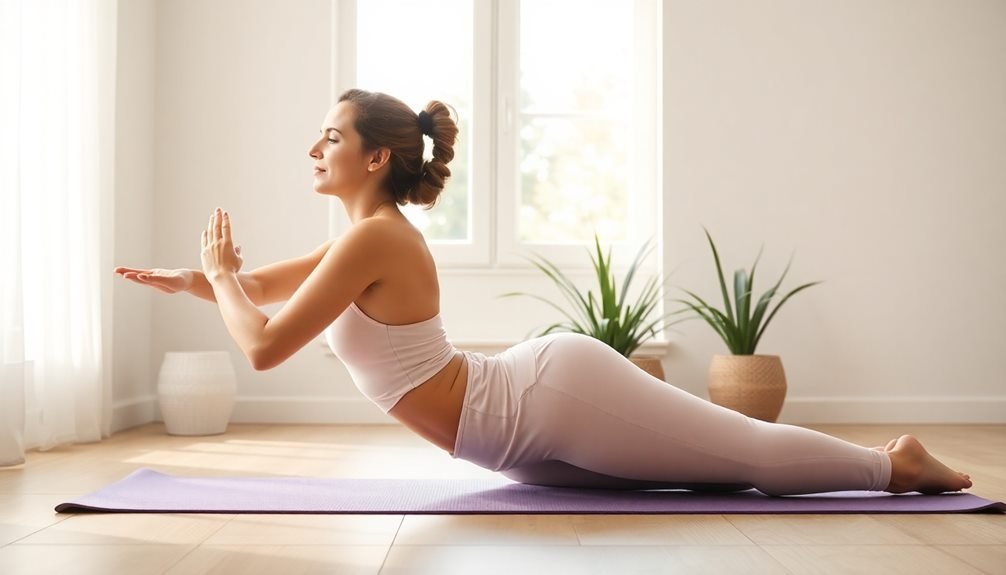Grounding techniques offer powerful tools to combat anxiety and promote mindfulness. You can try the 5-4-3-2-1 sensory technique, engaging all five senses to redirect attention. Progressive muscle relaxation systematically tenses and relaxes muscle groups, reducing physical tension. Deep breathing exercises regulate your breath and calm your nervous system. Mindful body scanning cultivates awareness of physical sensations from head to toe. Using grounding objects with interesting textures can anchor your attention in the present moment. These expert-backed practices help you manage stress and enhance emotional well-being. Exploring these techniques further can reveal even more strategies for anxiety relief.
Key Takeaways
- The 5-4-3-2-1 technique engages all five senses to redirect attention from anxiety and ground oneself in the present moment.
- Progressive Muscle Relaxation systematically tenses and relaxes muscle groups, reducing physical tension and enhancing body awareness.
- Deep breathing exercises, like the 4-7-8 technique, regulate breath and calm the nervous system, effectively reducing anxiety symptoms.
- Mindful body scanning cultivates awareness of physical sensations, shifting focus from worries to present bodily experiences.
- Grounding objects and textures utilize tactile sensations to anchor attention and create a mental focus away from anxious thoughts.
The 5-4-3-2-1 Sensory Technique

Grounding yourself in the present moment can be a powerful tool for managing anxiety. The 5-4-3-2-1 sensory technique is a simple yet effective method to help you regain focus and calm your mind. This exercise engages all five senses, redirecting your attention away from anxious thoughts and onto your immediate surroundings.
To practice this technique, start by taking a few deep breaths.
Then, identify five things you can see around you.
Next, focus on four things you can touch or feel, such as the texture of your clothing or the surface beneath you.
Move on to three things you can hear, like distant traffic or nearby conversations.
Then, notice two things you can smell, even if you need to move closer to an object to detect its scent.
Progressive Muscle Relaxation

In accordance with its name, Progressive Muscle Relaxation (PMR) involves systematically tensing and relaxing different muscle groups throughout your body. This technique helps you become more aware of physical sensations and reduces overall muscle tension, which can greatly alleviate anxiety symptoms.
To practice PMR, find a comfortable position and start with your toes. Tense the muscles in your toes for 5-10 seconds, then release and relax for 10-20 seconds. Pay attention to the difference between tension and relaxation. Move up to your feet, then calves, thighs, and so on, working your way up to your head.
As you progress, focus on each muscle group individually. Breathe deeply and slowly throughout the exercise. You may notice that some areas are particularly tense; spend extra time on these spots.
Regular practice of PMR can lead to improved body awareness and an enhanced ability to manage stress. Many people find it helpful to use guided audio recordings when first learning the technique.
With consistent practice, you'll likely find that you can apply PMR in various situations to quickly reduce anxiety and promote relaxation.
Deep Breathing Exercises

While Progressive Muscle Relaxation focuses on physical tension, Deep Breathing Exercises target your respiratory system to combat anxiety. These techniques help you regulate your breath, which can slow your heart rate and calm your nervous system.
To practice deep breathing, start by finding a comfortable position. You can sit or lie down, whichever feels most natural. Place one hand on your chest and the other on your stomach. Inhale slowly through your nose, allowing your stomach to expand while keeping your chest relatively still. Exhale through your mouth, letting your stomach fall. Repeat this process for several minutes.
You can enhance your deep breathing practice by incorporating counting. Try the 4-7-8 technique: inhale for 4 counts, hold for 7, and exhale for 8. This pattern helps you focus on your breath and creates a natural rhythm.
Another variation is box breathing: inhale for 4 counts, hold for 4, exhale for 4, and hold again for 4. Visualize tracing a square as you breathe, associating each side with a phase of the breath cycle.
Mindful Body Scanning

Through mindful body scanning, you can cultivate a heightened awareness of your physical sensations, helping to anchor your attention in the present moment. This technique involves systematically focusing on different parts of your body, from head to toe, noticing any feelings or sensations without judgment.
To practice mindful body scanning, find a comfortable position, either lying down or sitting. Close your eyes and take a few deep breaths to center yourself.
Begin by focusing on your toes, noticing any tension, temperature, or tingling sensations. Slowly move your attention up through your feet, ankles, legs, hips, torso, arms, hands, neck, and head.
As you scan each area, observe any sensations without trying to change them. If your mind wanders, gently bring your focus back to the body part you're currently scanning.
This practice not only helps reduce anxiety by shifting your attention away from worrying thoughts but also promotes relaxation and body awareness.
Regular practice of mindful body scanning can improve your ability to recognize and manage physical manifestations of stress and anxiety, leading to greater overall well-being and emotional regulation.
Grounding Objects and Textures

Many anxiety-busting techniques rely on physical sensations to anchor you in the present moment. Grounding objects and textures offer a tangible way to redirect your focus from anxious thoughts to your immediate surroundings. These objects can be anything that engages your sense of touch and provides a soothing or interesting sensation.
To use this technique, choose an item that's easily accessible, such as a smooth stone, a textured stress ball, or a piece of soft fabric. When you feel anxiety creeping in, hold the object in your hand and concentrate on its physical properties. Notice its weight, temperature, and texture. Run your fingers over its surface, exploring every contour and detail.
You can also use everyday items in your environment. Touch the fabric of your clothing, feel the texture of a wooden table, or run your hands under cool water.
The key is to fully immerse yourself in the sensory experience. By focusing intently on these tactile sensations, you're creating a mental anchor that can help pull you out of anxious thought patterns and back into the present moment.
Frequently Asked Questions
How Long Does It Take to See Results From Grounding Techniques?
You'll often feel immediate relief when using grounding techniques. However, for lasting benefits, practice regularly for 2-4 weeks. You'll notice improved anxiety management and emotional regulation as you consistently apply these methods in your daily life.
Can Grounding Techniques Be Used During Panic Attacks?
Yes, you can use grounding techniques during panic attacks. They're powerful tools to help you regain control. Focus on your senses, practice deep breathing, or try the 5-4-3-2-1 method to calm your mind and body quickly.
Are There Any Potential Side Effects of Practicing Grounding Techniques Regularly?
You're unlikely to experience negative side effects from regular grounding techniques. They're generally safe and beneficial. However, if you have trauma, some methods might trigger memories. Always listen to your body and adjust as needed.
How Do Grounding Techniques Differ From Traditional Meditation Practices?
Grounding techniques differ from traditional meditation as they're more focused on connecting you to the present moment through your senses. You'll often engage with your environment physically, while meditation typically involves a more internal, still practice.
Can Children Effectively Use Grounding Techniques for Anxiety Management?
Yes, children can effectively use grounding techniques for anxiety management. You'll find that simple exercises like deep breathing, focusing on senses, or describing objects can help kids stay present and calm their anxious thoughts.
In Summary
You've now learned five powerful grounding techniques to manage anxiety. Remember, you're not alone in your struggles. Practice these methods regularly, and you'll build a toolkit for calming your mind and body. Don't hesitate to seek professional help if needed. With time and patience, you'll become more adept at using these strategies. Stay committed to your mental health journey, and you'll find greater peace and resilience in your daily life.





Leave a Reply